

I. M. Pei (and Henry Cobb)
1972-75
| This slender parallelogram, sixty stories tall, has been criticized for aesthetic reasons, particularly its placement in Copley Square near two important nineteenth century buildings--Richardson's Trinity Church and McKim, Mead and White's Boston Public Library. The abstract, high-tech quality of the John Hancock Tower seems jarring for some with the more humane, solid, masonry buildings. | ||
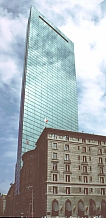 |
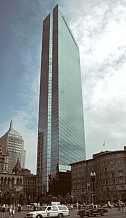 |
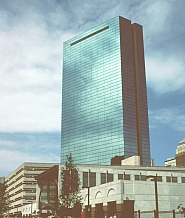 |
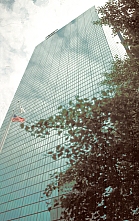 |
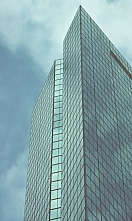 |
In 1972, when the building was nearing completion, the windows began to fall out, thus delaying its opening. For a time, plywood panels were installed in the window openings--leading to the joke in Boston that the building should be renamed the U. S. Plywood Building. |
| The base has been criticized aesthetically, especially for the series of glass bubbles that project from the glass wall to serve as entrance canopies (seen on the left). For a contrasting solution see Roche Dinkeloo's UN Plaza Building. | ||
The baseThe glass curtain wall of the building reflects the adjoining buildings (Trinity Church, for example, seen on the right). |
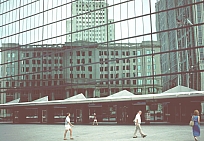 |
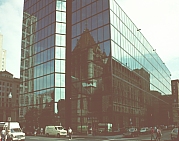 |
![]() Click here to return to places index.
Click here to return to places index.
![]() Click here to return to index of artists and architects.
Click here to return to index of artists and architects.
![]() Click here to return to chronological index.
Click here to return to chronological index.
![]()